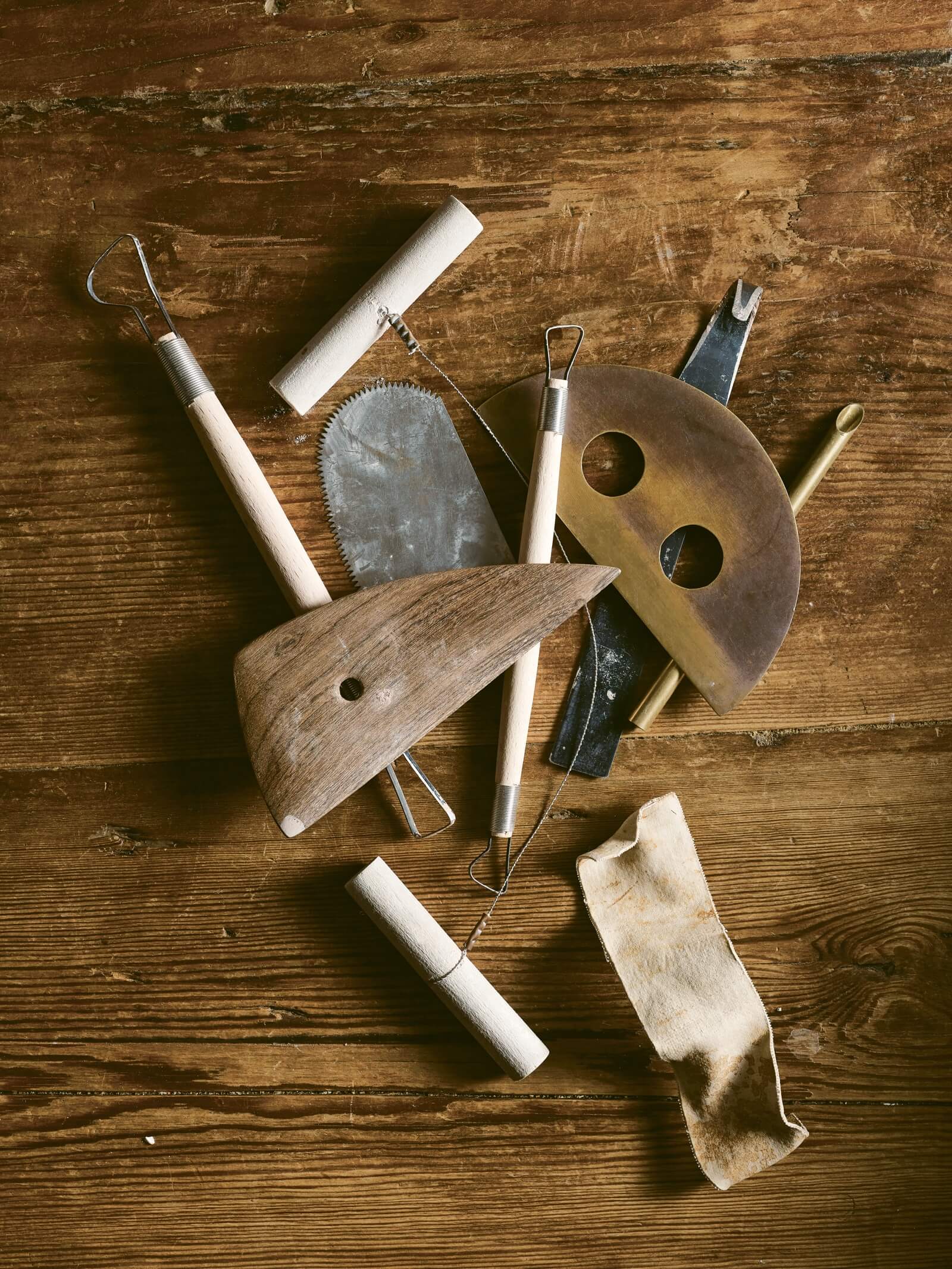The Story of Tools
An exploration of the role of tools in craft and design.
Hole & Corner
Pavilion, 2019
CRAFT, SO LONG a dirty word in the worlds of art and design, has undergone a remarkable renaissance over the past decade. Reasons for this are manifold. Historically, for instance, in times of recession ‘making’ tends to do well as consumers have to think harder about their choices and resources are scarce. However, there are other, more subtle, explanations too.

The Story of Tools
COURTESY: Pavilion
Craft has had an intellectual kick start. In 2010, for instance, sociologist Richard Sennett published The Craftsman. It argued that we were in fact surrounded by craft and that skill was something innate in all of us, from the Linux programmer hunched over a computer, to the hospital nurse dealing with another winter crisis.
The book changed the perception of craft in both academic and media circles. In its wake came tomes from the likes of Edmund de Waal, Robert Penn, Alexander Langlands, and Peter Korn. And then there was Matthew Crawford’s The Case for Working with Your Hands: Or Why Office Work is Bad for Us, in which the American academic-turned-motorcycle mechanic created a manifesto arguing that manual work was more satisfying that climbing the corporate ladder. It caught the eye of a fistful of politicians and thanks in part to Crawford’s treatise, for a brief moment making even entered the political lexicon. In 2010 John Hayes, then-Minister of State for Business, Innovation & Skills delivered a genuinely eye-opening lecture at London’s Royal Society of Arts entitled, ‘The Craft So Long to lerne: Skills and their Place in Modern Britain’, in which he opined, “People speak of the intellectual beauty of a mathematical theorem. But there is beauty, too, in the economy and certainty of movement of a master craftsmen. I believe that both kinds of beauty must be recognised on their own terms. And that implies not that the stock of academe must fall, but that the stock of craft must rise.”
![“Everything from the balance and the weight of a pair [of scissors] in your hand is crucial to the ease and efficiency of carrying out different tasks.” Abigail Booth of Forest + Found, a creative partnership she founded in 2014 with fellow artist Max Bainbridge. COURTESY: Lol Keegan](https://thedesignedit.com/wp-content/uploads/2019/06/abigail-booth-of-forest-found@2x.jpg)
“Everything from the balance and the weight of a pair [of scissors] in your hand is crucial to the ease and efficiency of carrying out different tasks.” Abigail Booth of Forest + Found, a creative partnership she founded in 2014 with fellow artist Max Bainbridge. COURTESY: Lol Keegan
More famously the former Chancellor of the Exchequer (and now editor of the Evening Standard) George Osborne closed his 2011 budget by describing his vision of a nation “carried aloft by the march of the makers” … Which of course got throttled in the stranglehold of his self-imposed austerity and, subsequently, the convulsions caused by the EU referendum.
Always alert to subtle shifts in the market, brands – big, global ones – began using the word too. Levi’s launched its Craftworkers campaign to coincide with the revamp of its London Regent Store in 2010 focussing on a group of fashionable, young things across art, music, performance and design and dressing them in … well, denim. Neatly the company appeared to be taking Richard Sennett at his word and finding skill in unexpected places, while at the same time hopping on the burgeoning bandwagon of hipster culture.
Meanwhile a mini-boom in magazine publishing occurred – rather against the odds quite frankly. Kinfolk launched in 2011, while Hole & Corner hit the shelves a couple of years later. Both were beautiful, featuring spare but alluring imagery and both advocated a slower more thoughtful lifestyle. And ‘lifestyle’ is a key word here because both had their antecedents in the fashion world, rather than the design press.
The Story of Tools is the latest offshoot from Hole & Corner. Divided into three sections – Wood and Stone; Earth, Metal and Glass; and Material, Cloth and Decoration – it essentially focuses on 25 tools and, perhaps as importantly, the people that own them. Predictably it looks sumptuous, which makes an opening essay from the artist and maker Linda Brothwell a little surprising. “I’m quite wary of the fetishisation of tools; this kind of nostalgia on pub walls,” she writes, “It’s a nostalgia that I don’t think is helpful.”

A selection of tools used in throwing, turning and shaping ceramics, as used by potter Florian Gadsby.
COURTESY: Lol Keegan
You fancy she might have asked to look at the proofs before putting pen to paper because, in the main, this is sentimental, occasionally wistful stuff, with maker after maker complaining that tools aren’t what they used to be. Christopher King a designer and master bat maker at Gray-Nicholls sets the tone early on, “I always look for tools that are pre-World War II,” he says. ‘“The common belief is that, after the war, British steel quality dropped as our government tried to maximise profits on production and exports.” As so it goes on with furniture designer David Linley complaining about the design of contemporary planes, or Christopher Howe suggesting that modern tools lack an affinity with the human body. Arguably the only truly unexpected moment was when I turned the page to find a double page spread devoted to a photograph of a Makita cordless power drill owned by designer and artist Gareth Neal.
All that said, The Story of Tools is a breezy, journalistic read, that occasionally throws up some interesting facts – I was interested to read how HDTV had made the job of Jim Parkyn, a model maker at Aardman Animations, so much more difficult, as now “every blemish and mistake is there for all to see” – and, as one would expect, it’s artfully produced.
It is in and of itself a precious-feeling object designed for the coffee table rather than the shelves of the workshop.
Linda Brothwell’s exhibition ‘Conversations in Making’ is currently showing at Stonehenge Visitors Centre, and will run until 24th November 2019.



